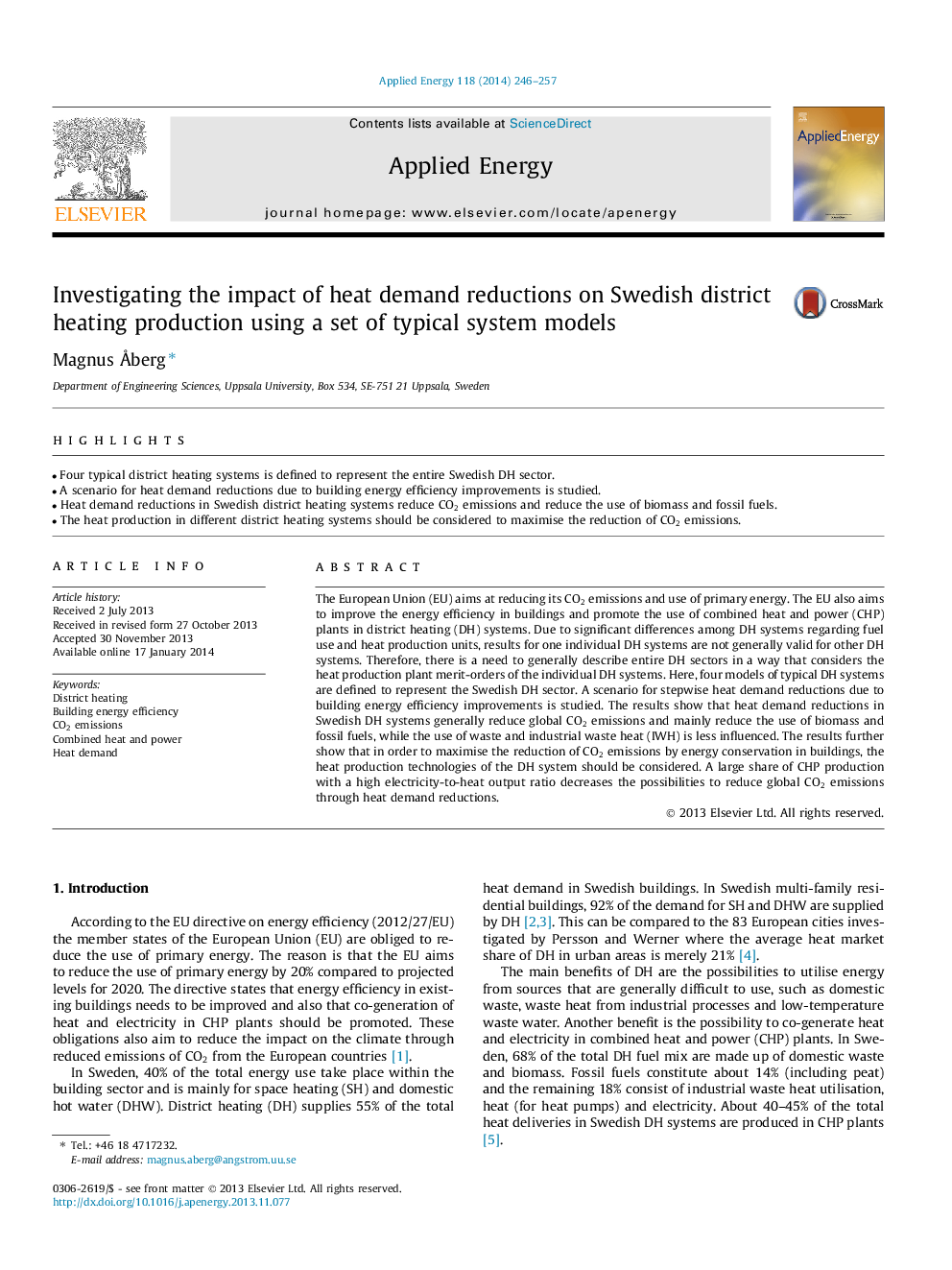| کد مقاله | کد نشریه | سال انتشار | مقاله انگلیسی | نسخه تمام متن |
|---|---|---|---|---|
| 242867 | 501907 | 2014 | 12 صفحه PDF | دانلود رایگان |
• Four typical district heating systems is defined to represent the entire Swedish DH sector.
• A scenario for heat demand reductions due to building energy efficiency improvements is studied.
• Heat demand reductions in Swedish district heating systems reduce CO2CO2 emissions and reduce the use of biomass and fossil fuels.
• The heat production in different district heating systems should be considered to maximise the reduction of CO2CO2 emissions.
The European Union (EU) aims at reducing its CO2CO2 emissions and use of primary energy. The EU also aims to improve the energy efficiency in buildings and promote the use of combined heat and power (CHP) plants in district heating (DH) systems. Due to significant differences among DH systems regarding fuel use and heat production units, results for one individual DH systems are not generally valid for other DH systems. Therefore, there is a need to generally describe entire DH sectors in a way that considers the heat production plant merit-orders of the individual DH systems. Here, four models of typical DH systems are defined to represent the Swedish DH sector. A scenario for stepwise heat demand reductions due to building energy efficiency improvements is studied. The results show that heat demand reductions in Swedish DH systems generally reduce global CO2CO2 emissions and mainly reduce the use of biomass and fossil fuels, while the use of waste and industrial waste heat (IWH) is less influenced. The results further show that in order to maximise the reduction of CO2CO2 emissions by energy conservation in buildings, the heat production technologies of the DH system should be considered. A large share of CHP production with a high electricity-to-heat output ratio decreases the possibilities to reduce global CO2CO2 emissions through heat demand reductions.
Journal: Applied Energy - Volume 118, 1 April 2014, Pages 246–257
